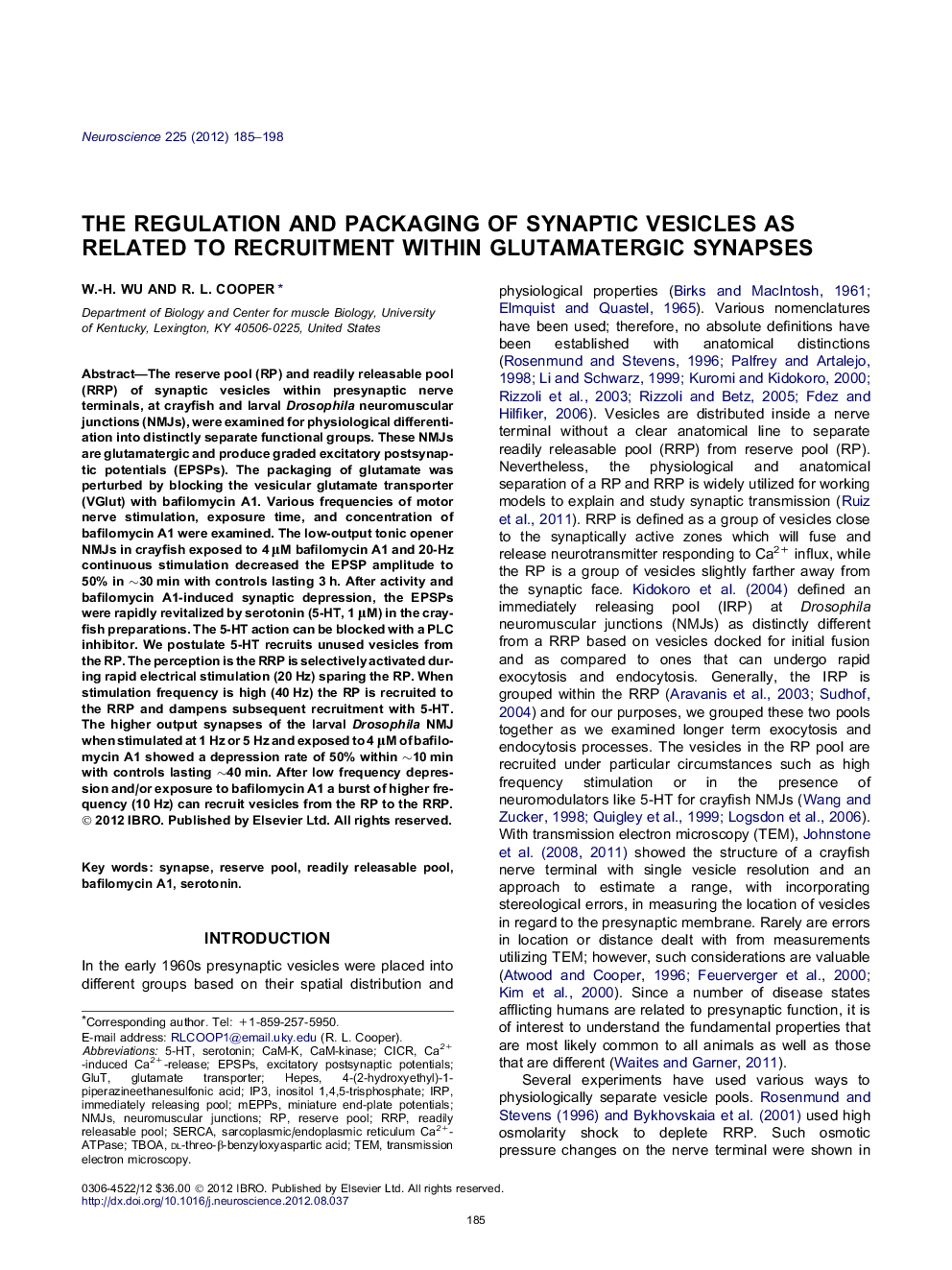| Article ID | Journal | Published Year | Pages | File Type |
|---|---|---|---|---|
| 4338241 | Neuroscience | 2012 | 14 Pages |
The reserve pool (RP) and readily releasable pool (RRP) of synaptic vesicles within presynaptic nerve terminals, at crayfish and larval Drosophila neuromuscular junctions (NMJs), were examined for physiological differentiation into distinctly separate functional groups. These NMJs are glutamatergic and produce graded excitatory postsynaptic potentials (EPSPs). The packaging of glutamate was perturbed by blocking the vesicular glutamate transporter (VGlut) with bafilomycin A1. Various frequencies of motor nerve stimulation, exposure time, and concentration of bafilomycin A1 were examined. The low-output tonic opener NMJs in crayfish exposed to 4 μM bafilomycin A1 and 20-Hz continuous stimulation decreased the EPSP amplitude to 50% in ∼30 min with controls lasting 3 h. After activity and bafilomycin A1-induced synaptic depression, the EPSPs were rapidly revitalized by serotonin (5-HT, 1 μM) in the crayfish preparations. The 5-HT action can be blocked with a PLC inhibitor. We postulate 5-HT recruits unused vesicles from the RP. The perception is the RRP is selectively activated during rapid electrical stimulation (20 Hz) sparing the RP. When stimulation frequency is high (40 Hz) the RP is recruited to the RRP and dampens subsequent recruitment with 5-HT. The higher output synapses of the larval Drosophila NMJ when stimulated at 1 Hz or 5 Hz and exposed to 4 μM of bafilomycin A1 showed a depression rate of 50% within ∼10 min with controls lasting ∼40 min. After low frequency depression and/or exposure to bafilomycin A1 a burst of higher frequency (10 Hz) can recruit vesicles from the RP to the RRP.
► The reserve pool (RP) and readily releasable pool (RRP) are physiological differentiated at NMJs. ► Inhibiting acidification of presynaptic vesicles enhances synaptic depression. ► Electrical activity and/or modulation by 5-HT can recruit the RP vesicles into the RRP vesicles. ► Higher synaptic efficacy synapses of Drosophila NMJs depress faster than low-output crayfish NMJs. ► At the crayfish NMJ a PLC inhibitor blocks the action of 5-HT in recruiting RP vesicles.
